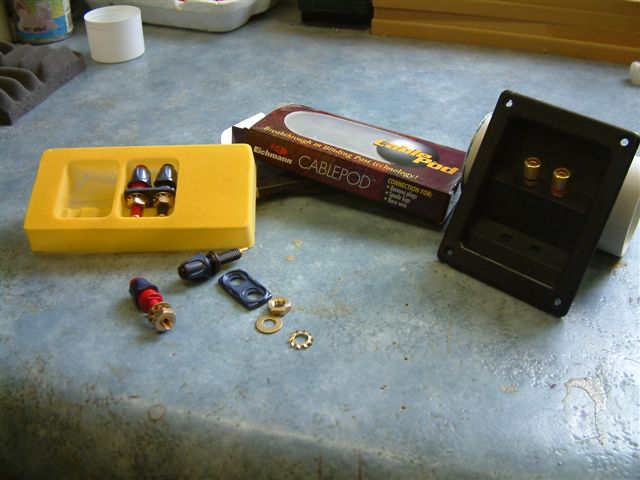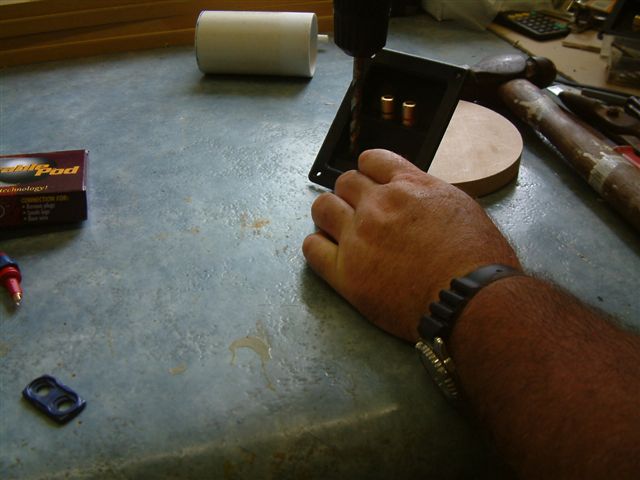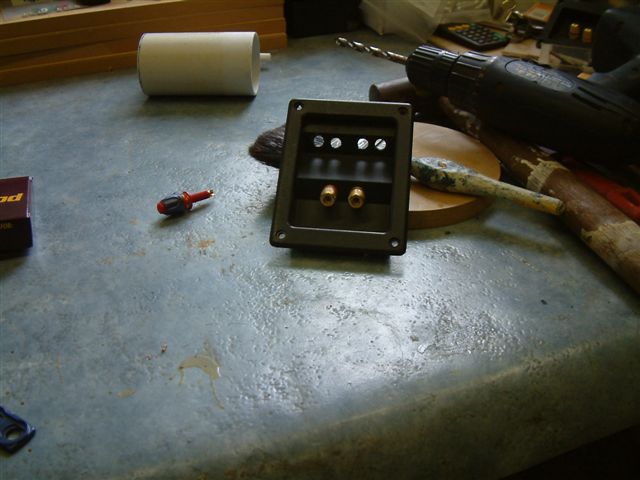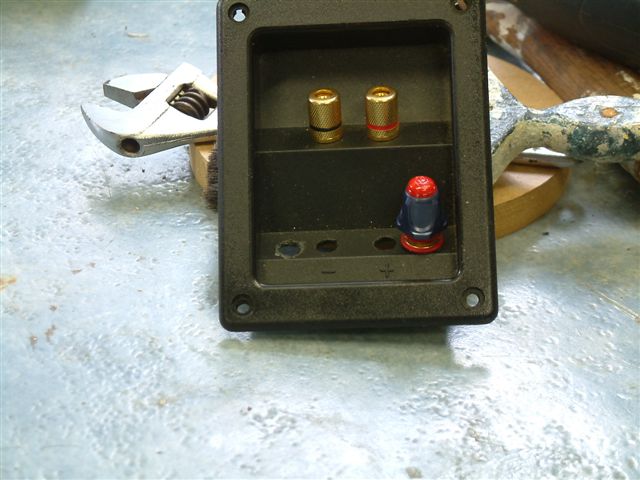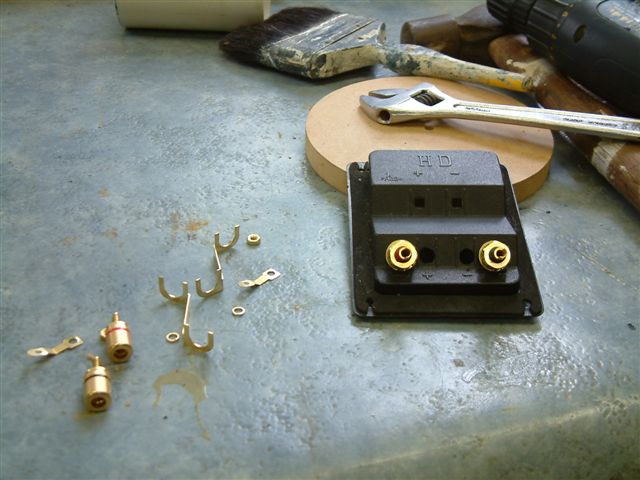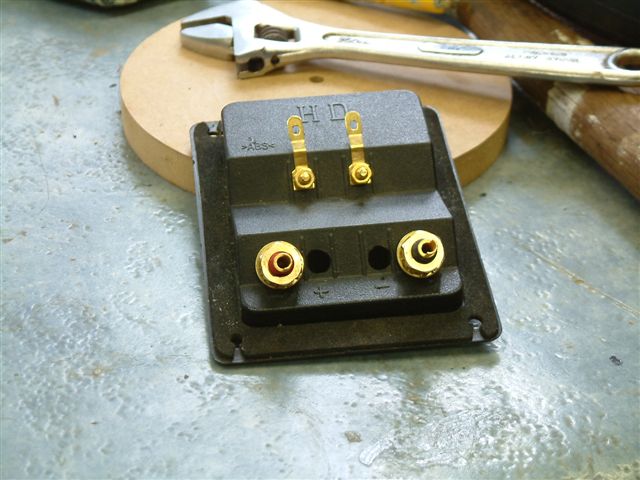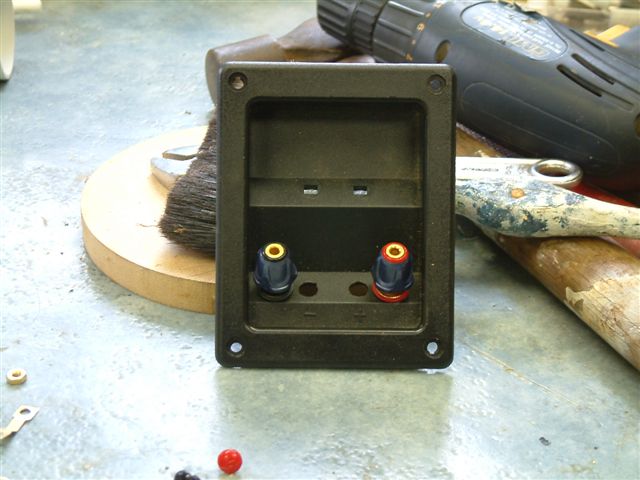What is a Quantum Purifier,
and why should you even give a hoot? I hesitate to describe them as
tweaks, because that tends to marginalize any add-on product. With most
tweaks, the lingering implication is that at best they may be expected
to incrementally improve the sound of one's system. That is not the case
with the Purifier, which embodies an exciting new technology that with a
bit of commercial luck may just become as ubiquitous in high-end audio
systems as are resistors and capacitors.
The Purifiers are the brainchild of Jack Bybee, a physicist who was
deeply involved in the development of a series of esoteric wire and
power purification technologies to reduce the noise floor aboard nuclear
subs and thereby improve sonar performance. Jack says that many of the
military applications of this technology are still classified, however,
continuing research has led Jack Bybee to develop solutions specific to
audio and video circuits.
Bybee's current product line supercedes previously released products.
The Quantum Purifiers are primarily intended to be installed internally
in any active device like
AC power Analogue and digital
interconnect cables , speaker crossovers , speaker enclosure terminals,
speaker drivers , speaker cable, amplifier out/ inputs, pre amplifier
out/ inputs , Digital Home Theatre , RCA and Digital Coax inputs/
outputs .More
information on specific applications is to be found on this WEB site
.
Based on my experience with the
interconnect purifier, their sonic effect is clearly cumulative with
additional devices upstream from the speakers. The magnitude of purity
and focus engendered by this device would typically only be the result
of a major system upgrade.
""Before you throw a lot of money at your
system, give the Purifiers an audition. Go ahead, give your audio system
the Windex treatment. If there ever was a no-brainer recommendation, the
Bybee Quantum Purifier is it. I can't imagine listening to my system
without them. ""
Technical Details
As a very basic intro it should be stated that signal conduction in all
electronic circuits is based on the movement of electrons through the
crystal lattice of conductor materials. While the signal does indeed
propagate at the speed of light, individual electron motion is extremely
slow and ponderous. Ultimately, the noise floor of any electronic
circuit is due to the quantum nature of the electron and its interaction
with the crystal lattice through which it moves. Several types of
quantum noise have been identified. Thermal and shot noise were
discovered by Schottky in 1918. Random thermal motion of the charge
carriers produces a small fluctuating noise potential, whose power is
uniform over frequency - so called white noise. Thermal noise places an
ultimate limit upon signal to noise performance in real circuits, which
cannot be improved upon without cooling the circuit. Shot noise occurs
in certain devices (e.g., vacuum tubes) due to random fluctuations in
current and its spectrum is also white in character. In contrast,
thermal noise is usually not an issue with solid-state devices. However,
for many solid-state circuit elements (e.g., MOSFET), the noise floor is
dominated by frequency dependent noise, often referred to as 1/f noise.
Its spectral density increases as the inverse of frequency, just like
pink noise. But unlike pink noise which is broadband, 1/f noise is
typically confined to under 2 kHz.
The key point is that 1/f noise behaves like the musical spectrum. Its
envelope mimics that of the musical signal. Recent research indicates
that perceptually such noise blends in very well with the music. Once
buried within the music, it is reasonable to speculate that 1/f noise
defuses image outlines and adulterates harmonic textures. After all, the
sonic benefits of the Purifier are exactly in these areas. Thermal
noise, on the other hand, is audible but does not correlate with the
music. To put it into perspective, let me use the analogy of vinyl ticks
and pops. Yes, they are quite audible, but they are resolved as distinct
from the music. And no, they don't bother me for the same reason that
audience noises are part of the concert hall experience. I have been
able to enjoy music at home through some pretty noisy tube-based
systems, which means that conventional signal to noise ratio does not
tell the whole story. The fact that 1/f noise dominates in many
solid-state devices holds a vital clue that may explain, for example,
some of the perceived sonic differences between tubes and transistors.
The basic premise of the Bybee's audio devices is that 1/f noise
detracts from the listening experience: reduce 1/f noise and you improve
the sound. The Purifier uses a combination of rare earth metal oxides in
a ceramic form to absorb and dampen 1/f noise. The ceramic surrounds a
low-value resistance (about 0.1 ohm). I asked Jack Bybee to provide me
with a brief explanation of the physics and engineering taking place in
the Quantum Purifier, without violating proprietary or classified
secrets. The bottom line, as Bybee states, it is that "when developing
the technology we did not fully understand why certain metal oxides
absorb or damp specific frequencies and to the best of my knowledge we
still do not." However, as is the case with audio cable and
interconnect, a fully understood theoretical basis is not necessary to
enjoy the benefits of the technology.
The purifiers are non-reactive and present a stable, low-impedance load.
All devices are now cryogenically treated, which is said to improve
performance. The outer layer of the purifier is Teflon coated.
The Experiment
When I agreed to the review, I made it clear to Jack Bybee that the
context for the evaluation would be my BassZilla loudspeaker, Lowther
version. First of all, I'm very familiar with these speakers, which
would make them a very sensitive test bed. And second, the crossover
network is mounted externally, so that it's an easy matter to access the
driver connections. As a general rule, Bybee has found the best results
from connecting the Purifier right at the driver terminal, so that it is
in series with the voice coil without any intervening components. I
followed this recommendation by soldering a small Purifier adjacent to
the positive terminal of each driver. Because of the BassZilla's high
sensitivity, Jack thought that the small Purifiers ought to work for
both the woofer and full range. He normally recommends the large
Purifier for woofers, but since I typically use low-power SE tube
amplification, he felt comfortable with the smaller devices that require
less of a break in period. By the way, I now have the large purifiers on
hand as well for additional testing.
The Sound
I installed the Purifiers in two stages, so that I could evaluate the
cumulative effect of multiple devices. In the first stage, I added
Purifiers to the Lowther DX4 drivers. Because the effect was so
dramatic, even after a minimal break in period, I hastened to treat the
woofers that same afternoon. Again the effect was clearly audible in the
range covered by the woofers.
The first impression was of heightened coherence. The various threads
making up musical passages snapped into greater focus. There was simply
less confusion about the placement of individual instruments within the
soundstage. Image outlines became more palpable, and the depth
perspective increased. The net effect was that soundstage transparency
was propelled several notches forward. It became much easier to peer
into the inner recesses of the soundstage and to gauge the relative
placement of various instruments. If I may be permitted a melodramatic
touch, it felt as if the Quantum Purifiers threw a giant search light
onto the soundstage, allowing for exquisite spatial detail and depth
layering.
My attention was next drawn to transient detail. Transients were, in
general, better defined. The attack portion became more incisive, while
the decay was easier to follow into the noise floor of the recording.
This made for an increased sense of speed and control. Low-level detail
retrieval also benefited. At no time did I feel that the Purifiers added
anything artificial to the sound. The increased detail was not the
result of any cheap tricks, but a natural outgrowth of the Purifier's
ability to clean up the sound. In the category of cheap tricks, I have
in mind hot sounding, etched Kevlar and metal dome tweeters, though to
be blunt about it, that description is a perfect match for almost all of
these tweeters. I listen to such tweeters for the same reason I'm
fascinated by train wrecks. Audiophiles, on the other hand, have voted
with their check books for the privilege of indulging in razor-sharp
treble. The Purifiers are fast, but they don't loose treble control. I
can imagine that a system with a hot treble range might actually sound a
bit more natural with the Purifiers in place. If that sounds
disappointing, I guess the Purifiers are not for you.
Instrumental timbre also got the Windex treatment. Harmonic textures
increased in purity as if a layer of dirt was washed away. In the upper
midrange, where the ear is most sensitive, overtones bloomed with a bit
more sheen than before. Dynamic nuances were also a bit more convincing.
The music's emotional power was allowed greater freedom of expression.
Finally, the upper bass and lower midrange sounded better integrated
with the core of the midrange. This gets us back to the feeling of
coherency that the Purifiers are so good at preserving. I suppose that
the degree to which this attribute is manifested may be speaker
dependent. In the case of the BassZilla, which is about giving
full-range drivers freedom of expression, coherency is already high. In
the case of multi-way speakers, where the signal is chopped up and fed
to various drivers with the hope of somehow reconstituting the sound at
the listening position, the situation is less clear. But my guess is
that even in the case of three and four-way systems that the Purifiers
should help pull the sound together.
Also provided by Jack Bybee, much later in the review process, was a
pair of the interconnect purifiers (with male/female RCA connectors)
that our Wayne Donnelly raved about previously. These were connected at
the output of the preamplifier. Their effect was very similar to that of
the speaker installed purifiers and highlights the cumulative benefit of
these devices.
Conclusion
Once in a life time there comes along a technology that breaks new
ground and is easily worth its weight in gold. Such is the case with the
Bybee Quantum Purifier. To put it into perspective, imagine the
following scenario. Money is no object and you have the opportunity to
purchase $20,000 worth of the finest cable/interconnect. Let me make
this perfectly clear: $320 worth of Purifiers will make for a far
greater sonic improvement in your system than would all of that cable.
In hindsight, cable is a band aid - the Purifier the cure.
Based on my experience with the interconnect purifier, their sonic
effect is clearly cumulative with additional devices upstream from the
speakers. The magnitude of purity and focus engendered by this device
would typically only be the result of a major system upgrade. Before you
throw a lot of money at your system, give the Purifiers an audition. Go
ahead, give your audio system the Windex treatment. If there ever was a
no-brainer recommendation, the Bybee Quantum Purifier is it. I can't
imagine listening to my system without them.
Specifications
Large devices (for use in AC applications, and with woofers and large
midrange drivers):
Length: 2 inches
Diameter: 9/16 inch
Leads: one inch, 14 gauge copper
Current: 15 A
Voltage: >1000 V
Small devices (for use in lower-current AC circuits, non-AC analog and
digital circuits, smaller midrange drivers and tweeters):
Length: one inch
Diameter: 3/8 inch
Leads: one inch, 18 gauge copper
Current: 4.3 A
Voltage: >1000 V

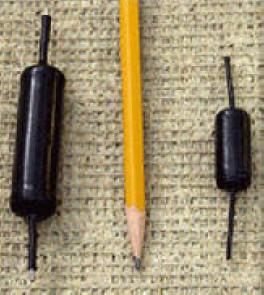 BBYBEE
SLIPSTREAM Quantum purifier
BBYBEE
SLIPSTREAM Quantum purifier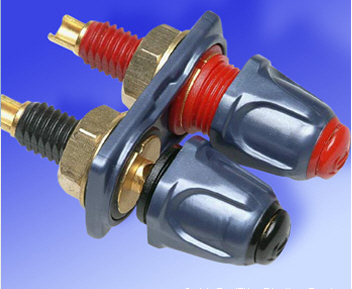 *Eichmann
cable pod Available " direct from Stones Sound Studio
*Eichmann
cable pod Available " direct from Stones Sound Studio